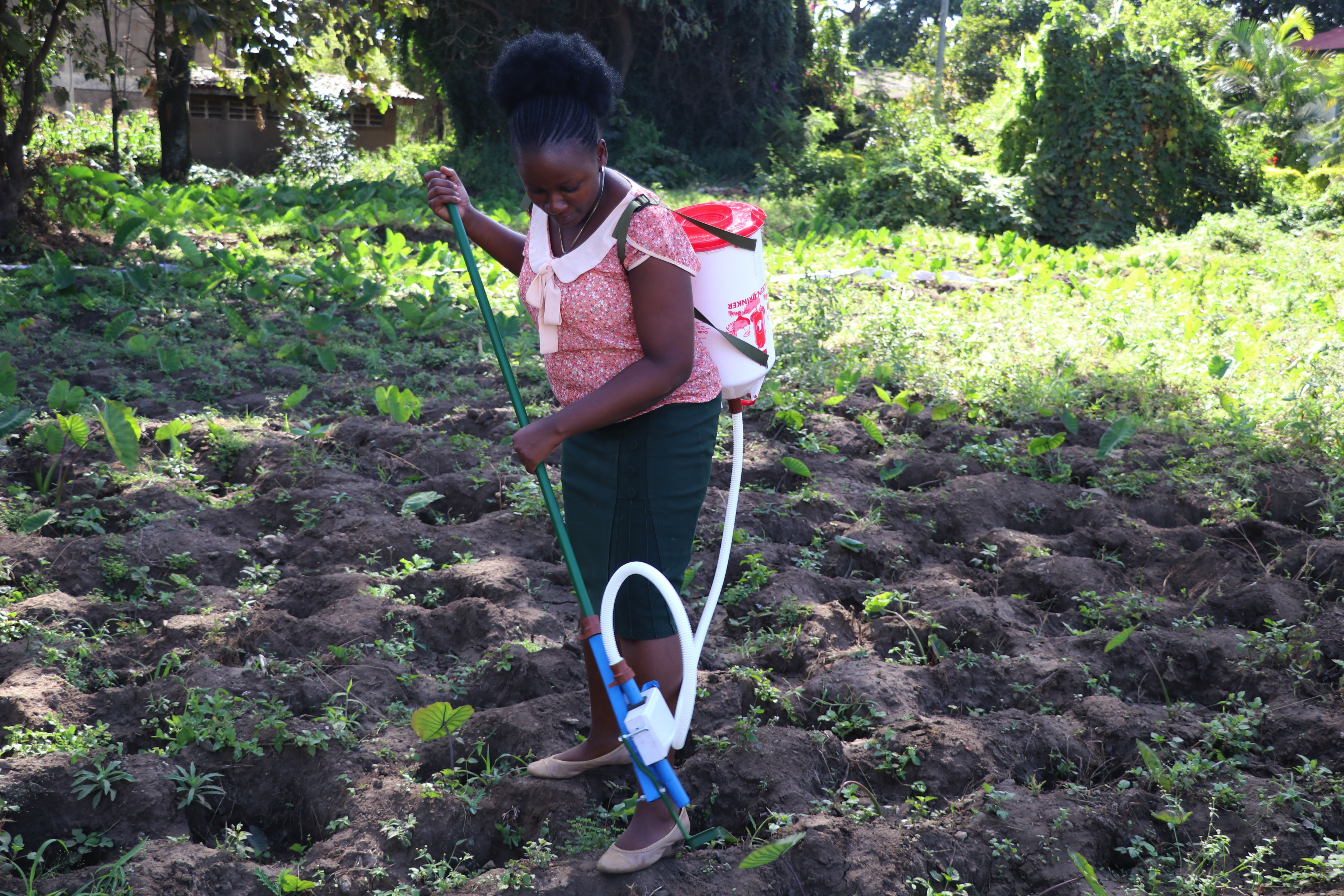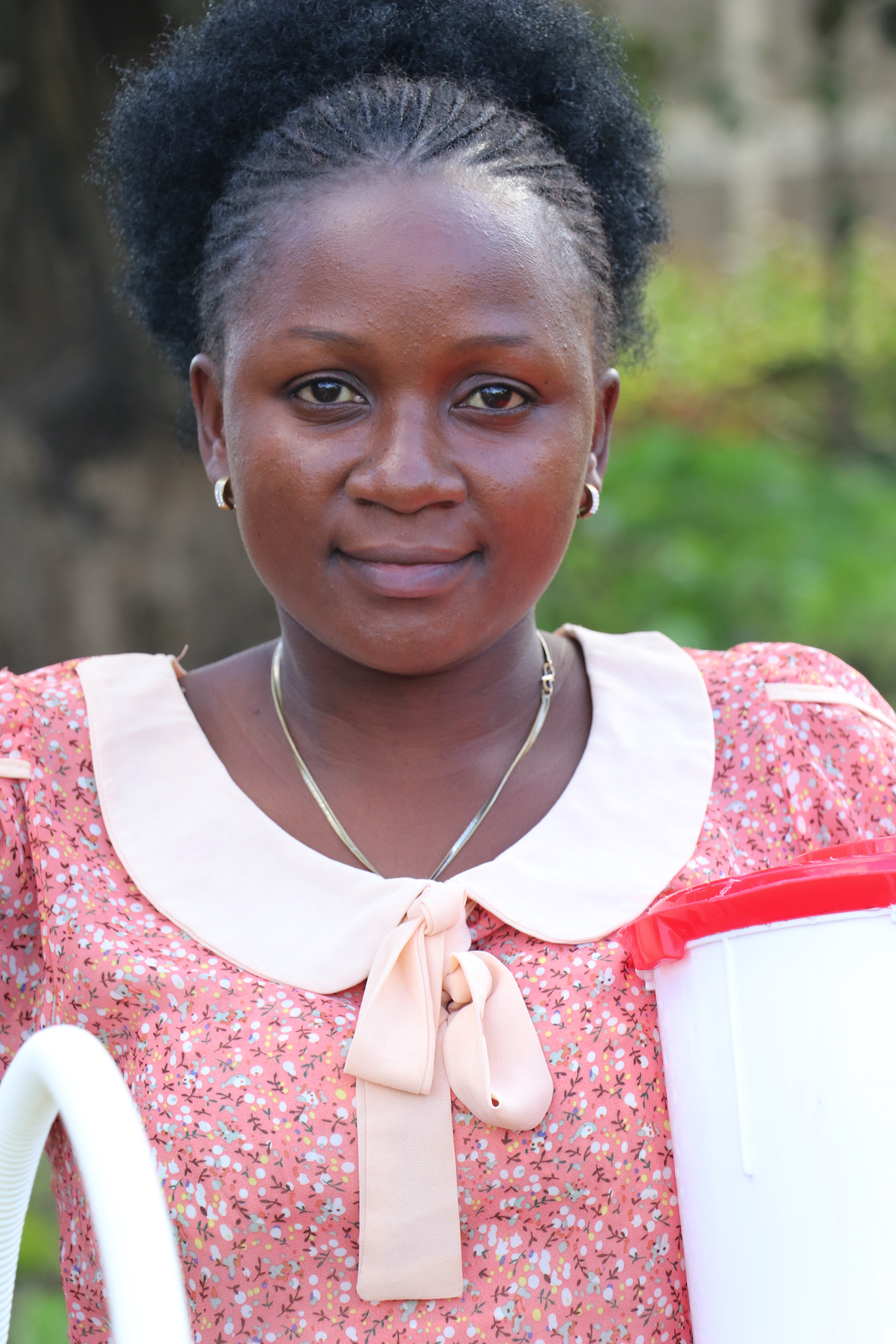Need to help farmers address declining soil fertility inspires young researcher to develop microdosing machine
Twenty-seven-year-old Tanzanian, Lilian Richard, has her sights set on giving smallholder farmers technological solutions to address declining soil fertility. This Master of Science in soil science degree holder is a registered patent holder for an innovation she developed four years ago — the fertilizer dose applicator machine. The machine helps farmers measure the right amount of fertilizer to apply for each plant in a farm. Uniform application of fertilizer in plants is a challenge for many farmers in Africa. It results in low and inefficient use of fertilizer in smallholder farms.
‘In 2016, while conducting my postgraduate research, which was supported by Africa RISING, the Innovative Agricultural Research Initiative (iAGRI), and the Alliance for a Green Revolution in Africa (AGRA), I realized that many farmers were not interested in applying fertilizers despite their knowledge about the benefits of doing so. My research assessed the response of maize to nitrogen (N) and phosphorous (P) microdose rates in the semi-arid parts of central Tanzania. Upon further probing, I found that one of the underlying reasons for this peculiar farmer attitude was the fact that most of them didn’t know the right application rates, hence a myth had taken hold among them that applying fertilizers actually “burns” their crops,’ notes Richard.

In addition, she also found that the blanket rates for fertilizer application were not ideal and had overwhelming financial implications for farmers. Through her research, she established that farmers could still get equivalent high yields by applying half of the blanket fertilizer recommended rates. For example, instead of applying the recommended 60 kg/ha of N and 40 kg/ha of P, a farmer could still get nearly similar yield quantity of maize by applying half dose, 30 kg/ha of N and 20 kg/ha of P, just by microdose application
The idea of a fertilizer applicator was born out of these contrasting scenarios: the need to apply low fertilizer rates efficiently and reduce drudgery at the same time. Targeted application with the fertilizer dose applicator ensures the half quantity is correctly calibrated and the fertilizer is close enough to the root area for uptake by the plant,’ explains Richard.
Fertilizer microdosing has been applied over the years and promoted to different smallholder farmer communities across Africa as a means for addressing the problem of declining soil fertility. Like all improved technologies, it has significant advantages, which include improving grain and biomass yields, affordability (reduced investment cost makes it accessible to the poor), and it offers savings for farmers on fertilizer and reduces environmental contamination. But one of the main disadvantages tagged to manual microdosing has always been the fact that it is time-consuming and labour-intensive.
Since 2016, Richard has been working with Tanzanian farmers to test and refine the prototype of the soil dose fertilizer applicator. The machine has two straps akin to a backpack attached to the main fertilizer holding container. Once the farmer deposits 15–20 kg of fertilizer into the holding container, they can then use the straps to hoist it on to their back. Attached to the holding container is a pipe running from the holding container to a nozzle-like delivery outlet that ensures that the fertilizer is deposited at the exact spot where the farmer wants it. To control fertilizer release, a long plastic cue stick is attached to the nozzle and it is on the cue stick that the farmer has the control buttons to initiate or stop fertilizer deposit. Only 5 grams of fertilizer is released at every press.
So far, the machine has been well received and embraced by farmers in Kongwa and Kiteto districts of Dodoma and Manyara regions of Tanzania where the tests were done.
‘With microdosing by hand, a group of 8–10 farmers is needed for about 8 hours to finish applying fertilizer on a 1 ha field. But with the fertilizer dose applicator, the same activity can be completed in 4 hours by 2 farmers per hectare. My work also documented that when farmers microdosed using the fertilizer applicator in both Dodoma and Manyara regions, the maize grain yields increased from an average of 1 t/ ha to 3 t/ha,’ says Richard.
Apart from gaining the approval of farmers, the fertilizer dose applicator has also won top awards at various events that are focused on recognizing agricultural technology innovations in Tanzania.
In 2016, the fertilizer applicator came in second beating a field of 20 finalist innovations at the Tech-Talent Launching Event organized by the Sokoine University of Agriculture (SUA) and the Innovative Agricultural Research Initiative (iAGRI) Program. In December 2018, the machine was recognized as the most outstanding innovation at the Agricultural Innovation Competition hosted by the Nelson Mandela University of Excellence in Arusha, Tanzania. More recently, in March 2019, the fertilizer applicator was among the top 10 innovations in Tanzania during the first national innovation competition (MAKISATU) that was organized by the Tanzania Commission for Science and Technology (COSTECH). The commission committed to sponsoring the fabrication of 50 fertilizer dose applicators for market testing through Tanzania government’s premier institution for technological development — the Small Industries Development Organization (SIDO).
‘I want to get this innovation into the hands of as many farmers as possible, says Richard, ‘but one of my main challenges is the lack of financial capital.’ She adds that working with programs such as Africa RISING and its partners, including the Word Agroforestry Centre (ICRAF), iAGRI, and AGRA, enabled her to develop the machine. ‘I am seeking ways to transform agriculture not only in Tanzania but also across the continent,’ she adds.
The Africa RISING Program, which is funded by the United States Agency for International Development (USAID) works with partners to support capacity building development programs for partners and students across Ethiopia, Ghana, Malawi, Mali, Tanzania and Zambia. Capacity development is a crucial and strategic enabler in the complex process of achieving development outcomes through research. Successful capacity development interventions enhance the ability of both core program staff and partners to improve farmer livelihoods and enhance community resilience.









Latest Comments